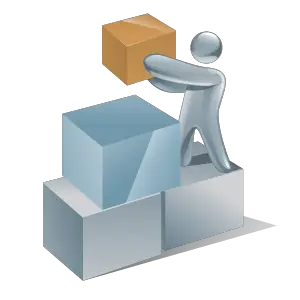When a business chooses to expand by either acquiring another company or developing expertise in an unchartered area itself, it uses either of two strategies — Horizontal Integration or Vertical Integration. Understanding these two concepts is critical to make sense of the strategy behind decisions made by companies and make a reasonable prediction about their future.
Put simply, Horizontal Integration is when a company tries to expand by acquiring a similar one in their industry at the same level of the supply chain. Marriott Hotels’ acquisition of Starwood Hotels & Resorts for $13 billion in 2015, which created the world’s largest hotel chain, is a classic example of Horizontal Integration.
On the other hand, Vertical Integration is when a company acquires another company that operates before or after it in the supply chain.
Carnegie Steel was one of the first widely known examples of Vertical Integration. Not only did the company own the mills where it made steel, but it also owned mines from where iron ore was extracted, coal mines that supplied the coal, ships that transported iron ore, railroads that transported coal to the factory, and coke oven where coal was coked.
Vertical Integration is further divided into two main types: Forward Integration & Backward Integration.
If a vertically integrating company acquires a company ahead of it in the supply chain or builds in-house expertise of the same process, it is called Forward Integration. If a vertically integrating company acquires a company behind it in the supply chain or builds in-house expertise of the same process, it is called Backward Integration.
To make things easier, let’s understand Vertical Integration through a straightforward example. Imagine you are a clothing manufacturer. If you acquire your raw material supplier or start procuring raw material on your own, that would be an example of Backward Vertical Integration since you would be moving backward in the supply chain. If you were to acquire a retailer or start a retail operation of your own, that would be an example of Forward Vertical Integration since you would be moving ahead in the supply chain.
Real-Life Vertical Integration Examples
Apple Vertical Integration
Apple is one of the most successful examples of both Forward and Backward Integration with sustained success.
Apple integrates backward by manufacturing the chips it uses in the Apple phones. By doing so, Apple can control chip quality and manufacturing costs.
Apple integrates forward by running its own Apple stores to sell its products. By doing so, Apple saves commission it would have to otherwise pay to retail partners & maintains a uniform sense of aesthetics across stores worldwide.
ZARA Vertical Integration
Another successful example of vertical Integration is the globally renowned brand ZARA. The company manufactures the clothes it sells in its retail stores as well designs them in-house. This backward vertical Integration ensures ZARA can keep up with changing fashion trends and update inventory quickly relative to competitors, resulting in higher profitability and a competitive advantage in the clothing industry.
McDonald’s Vertical Integration
McDonald’s, the world’s largest restaurant company, also employs Vertical Integration. The company integrates backward by running manufacturing plants to procure raw materials used to prepare its eatables. Other than this, the company also grows its agricultural products to maintain a uniform quality standard.
Advantages of Vertical Integration
Cost Control
The more the pieces of the supply chain companies own, the more money they can save. The removal of intermediaries from the supply chain leads to increased cost savings, some of which companies can keep to themselves and pass some of them to the customers. The decrease in prices leads to increased customer demand, leading to more sales and profits.
Increased Market Control
Imagine a scenario where a retailer integrates backward with a producer or a manufacturer. Now, suppose, for the sake of this example, that this vertical backward Integration occurs in an industry or market where one of two large producers controls much of the good needed to make the finished product. In this case, integration can lead to increased control over the competitive landscape and the market. Other than this, a backward integrating company could also inherit patents, resources & technology that could give it an advantage over competitors.
Better Product & Customer Knowledge
When a manufacturer integrates forwards by acquiring a retail company, it learns more about buyers and gets a better idea of customer behavior. Suppose the manufacturer has also integrated backward by owning raw material procurement. In that case, it can create products quickly based on changing consumer behavior. This way, the once manufacturer-only company can stay on top of the market.
Disadvantages of Vertical Integration
High Initial Costs
If a company vertically integrates by buying a company, it might have to shell out excessive money. If it is integrating vertically by setting up its operations internally, the company also has to spend a lot of money. In a worst-case scenario, if the vertical integration is unsuccessful, the company’s balance sheet might go in the red.
Culture Mismatch
While cultural tensions might not seem like a problem, there have been multiple instances where vertical integration failed to materialize due to cultural and value-based conflicts. For example, a new-age technology-driven startup merging with an old-age sales-driven organization might face problems getting accustomed to the working methodology & culture of the parent organization.
Leads to Barriers of Entry
Controlling the entire supply chain is undoubtedly beneficial for a company. But if a company becomes harmfully dominant in a market by trying to monopolize, it can lead to unwarranted entry barriers, raising antitrust concerns.
Learn More Business Concepts
![Vertical Integration [ Definition, Types, Advantages & Disadvantages ]](https://whatisthebusinessmodelof.com/wp-content/uploads/2021/11/VerticalIntegrationExample.png)
